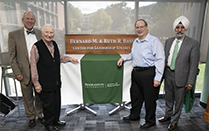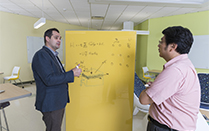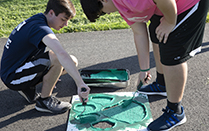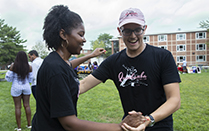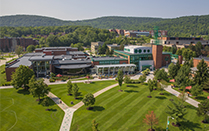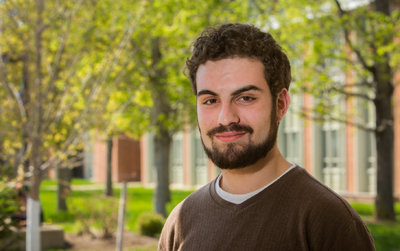
Binghamton senior wins NSF fellowship
After studying at a neurological stem cell research facility near his home in Albany, Ray Futia shocked his family when he told them about the focus of his new project: yeast.
Futia says the initial reaction from his family was, “Why yeast? Don’t we already know everything about yeast?”
That confusion is what fueled Futia, a biology major and chemistry minor, to continue his research on mitochondrial variation in yeast at Binghamton University. It also led to a grant from the National Science Foundation’s Graduate Research Fellowship Program, which will provide funding for his work when he begins graduate school at Stanford University this fall.
So, why yeast? “If you want to learn how a Ferrari works,” Futia says, “you start by looking at the engine of a lawn mower. Yeast is our lawn mower.”
Working with yeast, a single-celled organism, provides biologists with more freedom and power in cell manipulation. Within the cell, Futia studies the mitochondria, which is responsible for energy production and metabolism regulation. The cells of all animals, including humans, have mitochondria. Yeast serves as a model organism, allowing scientists to extrapolate data and apply it to other populations.
Heather Fiumera, assistant professor of biological sciences at Binghamton University and Futia’s research advisor, heads a lab that focuses on mitochondrial genetics. Studying mitochondrial genomes might explain why two people differ in athletic ability, or help researchers understand more about mitochondrial diseases.
Mitochondria carry their own DNA, separate from the DNA in the nucleus. Molecular biologists believe this is a result from a large cell engulfing a smaller cell, incorporating two sets of DNA into a single cell, which then evolved so that all animals have separate mitochondrial DNA.
Unlike animals, yeasts reproduce by budding, a type of cloning. For years, scientists thought that through cloning, the daughter cell would have the exact same mitochondrial DNA as the parent cell. “We found that that wasn’t the case,” Futia says, “and no one has really definitively proved this before.”
Futia is incorporating these results into a research paper. He has also presented his research at Binghamton, as well as a yeast genetics conference in Seattle.
For Futia, the most challenging part of his independent research has been finding the right questions to ask. “When somebody finds a good question,” Futia says, “and nobody’s answered it yet, and they have idea about how to solve it, then they found gold.”
There’s a method to coming up with good questions, and there’s a reason Futia has been asking them. “He’s inquisitive and mentally prepared,” Fiumera says, “and a prepared mind gets lucky.”


